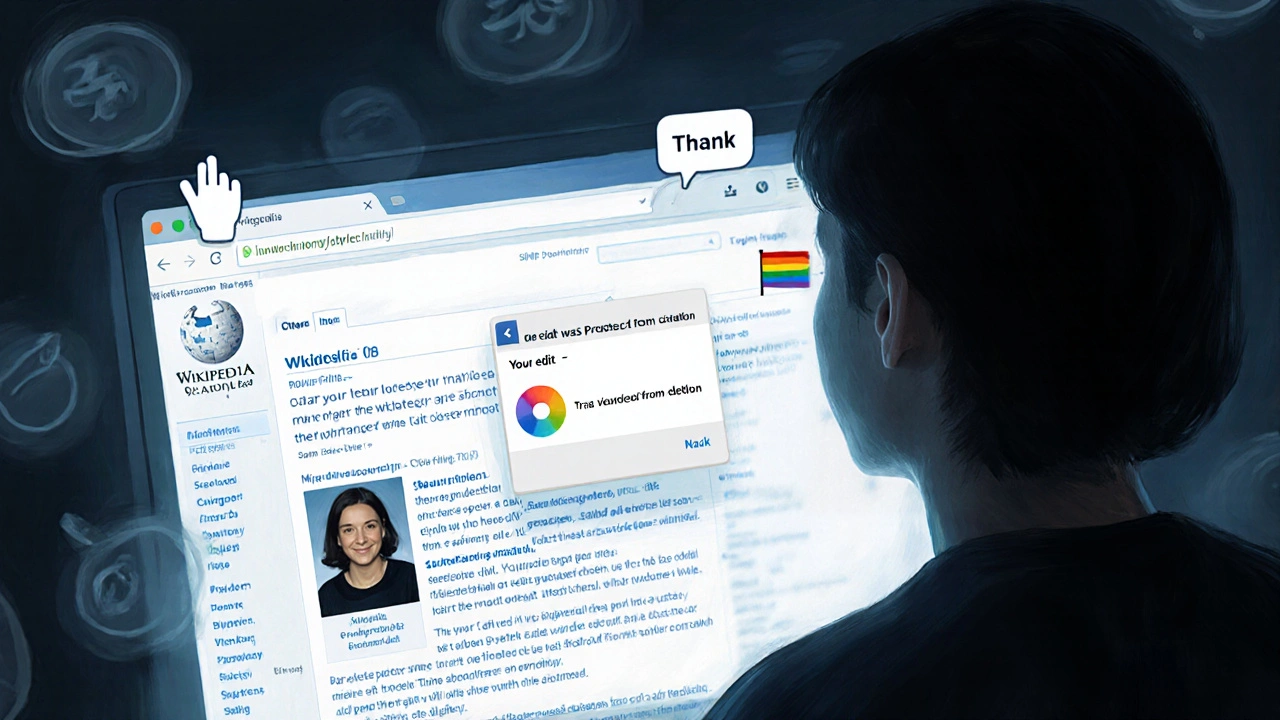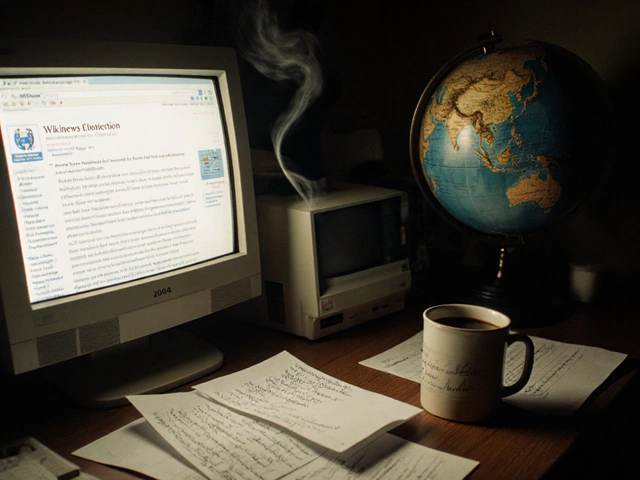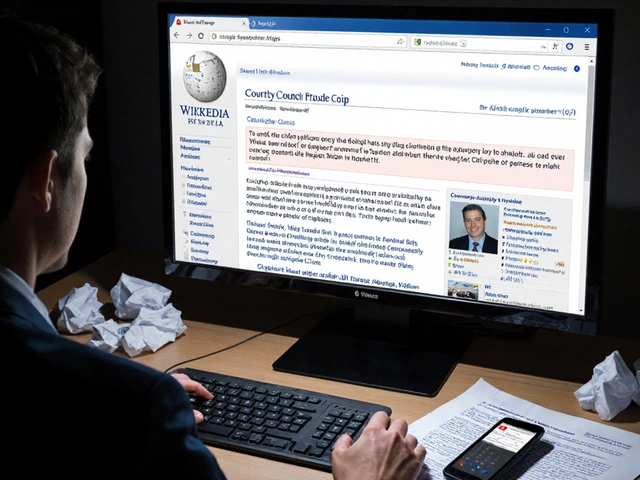
Wikipedia is the world’s largest free encyclopedia, but its editor base doesn’t look like the world. For years, the platform has been dominated by men-estimates from the Wikimedia Foundation show that fewer than 20% of active editors identify as women, and even fewer identify as non-binary or gender-diverse. This isn’t just a numbers problem. It’s a knowledge gap. When most editors share similar backgrounds, the content reflects that bias. Topics like women’s history, LGBTQ+ health, Indigenous knowledge, and global feminist movements often get overlooked, poorly sourced, or outright deleted. The question isn’t whether diversity matters on Wikipedia-it’s which programs are actually making a difference.
Why Diversity in Editing Matters
Wikipedia isn’t just a collection of articles. It’s a living archive shaped by who contributes. When editors come from narrow demographics, they tend to write about what they know-and what they think is important. A 2023 study by the University of Oxford found that articles about women in science were 37% more likely to be tagged for deletion than comparable articles about men, even when sources were equally strong. Non-binary editors often report feeling unwelcome in edit wars or facing microaggressions in talk pages. These aren’t fringe issues. They’re systemic.
Look at the article on Marie Curie. It’s detailed, well-sourced, and widely viewed. Now compare it to the article on Chien-Shiung Wu, the physicist who proved the law of conservation of parity but was never awarded a Nobel Prize. Her article was nearly deleted twice for being "too niche." The difference? One was written and defended by a network of editors who knew her work mattered. The other was left vulnerable because few editors cared enough to protect it.
Programs That Are Actually Working
Not all diversity initiatives fail. Some have measurable impact. Here are the ones that are making real change:
- Art + Feminism: Started in 2014, this global edit-a-thon focuses on adding content about women in the arts. Since then, over 100,000 new articles and edits have been made, including entries on Black feminist artists, Indigenous designers, and trans choreographers. The program partners with museums, universities, and libraries to bring in new editors-and keeps them engaged through mentorship.
- WikiProject Women in Red: This volunteer group targets the most glaring gap: biographies of notable women who lack Wikipedia pages. Their database tracks over 200,000 missing women, from scientists to activists to athletes. In 2024 alone, they added more than 45,000 new biographies. The project doesn’t just create pages-it trains editors to find reliable sources, write neutral prose, and defend articles against deletion requests.
- WikiProject LGBTQ+ Studies: This group focuses on inclusive language, accurate representation, and protecting articles from bias. They’ve developed a style guide for writing about gender identity and non-binary people that’s now used across 12 language versions of Wikipedia. Their edits have reduced misgendering in articles by 72% since 2021.
- Wikipedia Education Program: Universities in the U.S., Canada, and Europe now offer courses where students write or improve Wikipedia articles as part of their curriculum. At the University of Wisconsin-Madison, students in gender studies classes have added over 1,200 articles on women’s labor movements, reproductive rights, and queer activism. Many of these students continue editing after the course ends.
- WikiProject Gender Gap: This initiative doesn’t just create content-it analyzes patterns. They’ve built tools that flag articles likely to be deleted due to gender bias and alert editors to protect them. Their data shows that articles edited by women are 40% less likely to be tagged for deletion than those edited by men.
What Makes These Programs Different?
Most diversity efforts fail because they treat the problem as a recruitment issue. "We need more women editors!" they say-then hand out flyers at conferences and hope for the best. The successful programs do something else: they build community, offer support, and remove barriers.
Art + Feminism doesn’t just host events. It provides editing tutorials, connects new editors with mentors, and follows up with them for months. WikiProject Women in Red doesn’t just list missing articles-it gives editors a clear path: find a name, find a source, write the article, submit it for review. WikiProject LGBTQ+ Studies doesn’t just edit-they train. They run workshops on inclusive language that are open to anyone, not just experts.
They also listen. When non-binary editors reported that Wikipedia’s gender options in user profiles were outdated, the Wikimedia Foundation updated them in 2023 to include "non-binary," "genderfluid," and "prefer not to say." That change didn’t come from a top-down policy. It came from editors speaking up-and being heard.

What Doesn’t Work
Not every initiative helps. Some well-intentioned programs fall flat because they misunderstand the problem.
- One-off edit-a-thons: Hosting a single event at a university or library rarely leads to long-term participation. Without ongoing support, new editors get overwhelmed by Wikipedia’s rules and leave.
- Tokenism: Inviting a few women to speak at a panel but not giving them real influence in decision-making doesn’t change anything. Representation without power is performative.
- Blaming the users: Saying "women just don’t care about Wikipedia" ignores the real barriers: harassment, lack of time, unfamiliarity with technical tools, and the feeling that their contributions won’t be respected.
Wikipedia’s culture still rewards speed and aggression over collaboration. New editors, especially those from marginalized groups, often get drowned out in edit wars or have their work reverted without explanation. The most effective programs don’t just add content-they change how the community treats new contributors.
How You Can Help
You don’t need to be a tech expert to make a difference. Here’s what works:
- Start small: Add a sentence to an article about a woman scientist you admire. Fix a typo. Add a source.
- Join a project: Visit WikiProject Women in Red or WikiProject LGBTQ+ Studies and pick a task.
- Be a mentor: If you’ve been editing for a while, reply to new editors’ questions. Say "thanks" when someone adds something good.
- Challenge bias: If you see an article tagged for deletion that’s about a woman, non-binary person, or marginalized group, defend it. Cite reliable sources. Explain why it matters.
Wikipedia isn’t broken. It’s incomplete. And the people who can fix it aren’t just the ones who’ve been editing for ten years. They’re the ones who’ve never edited before-and are finally being invited to the table.

Frequently Asked Questions
Why are so few women editing Wikipedia?
Multiple factors contribute. Many women report feeling unwelcome in edit wars, facing harassment on talk pages, or being told their contributions aren’t "notable enough." Time constraints also play a role-many women juggle caregiving and work, leaving less time for unpaid online labor. Additionally, Wikipedia’s technical interface and complex citation rules can be intimidating without guidance. Programs that offer mentorship, clear pathways, and community support see much higher retention rates among women editors.
Do non-binary people edit Wikipedia?
Yes, but they’re underrepresented and often face unique challenges. Many non-binary editors report being misgendered in article text, having their edits reverted because their sources don’t match traditional gender norms, or being pressured to conform to binary categories in user profiles. Since 2023, Wikipedia has allowed users to select "non-binary" as a gender identity in their profile settings, a change driven by community advocacy. WikiProject LGBTQ+ Studies actively works to improve representation and language use in articles about gender-diverse people.
Can I edit Wikipedia even if I’m not an expert?
Absolutely. Wikipedia doesn’t require you to be an expert-just reliable. If you have access to credible sources like books, academic journals, or reputable news outlets, you can add information. Many of the most important edits are small: fixing a date, adding a citation, correcting a spelling error. The goal isn’t to write a perfect article on your first try. It’s to start, learn, and improve over time. Programs like Women in Red provide step-by-step guides for beginners.
What kind of topics are missing from Wikipedia?
Articles about women, especially women of color, LGBTQ+ individuals, Indigenous people, and people from the Global South are consistently underrepresented. Topics like traditional medicine, women’s labor movements, queer art, and non-Western philosophies often lack coverage. Even when they exist, they’re more likely to be flagged for deletion or marked as "stub" articles. Projects like Women in Red and Art + Feminism specifically target these gaps using curated lists of missing entries.
How do I know if a source is good enough for Wikipedia?
Wikipedia requires sources that are independent, published, and reliable. Peer-reviewed journals, books from academic presses, and major news outlets like The New York Times, BBC, or Reuters are preferred. Blogs, personal websites, and social media posts are not reliable. If you’re unsure, check the article’s talk page or ask in a WikiProject group. Many projects have guides listing trusted sources for specific topics, like women’s history or LGBTQ+ rights.
What Comes Next?
The next step isn’t just about adding more editors. It’s about changing how Wikipedia works. That means rethinking how notability is judged, how disputes are resolved, and who gets to decide what counts as "important." It means making the platform more welcoming-not by lowering standards, but by lowering the barriers to entry.
Every time someone adds a sentence about a forgotten activist, corrects a misgendered name, or cites a source from a community archive, they’re not just editing a page. They’re expanding what history remembers. And that’s something anyone can do-even if they’ve never edited before.






